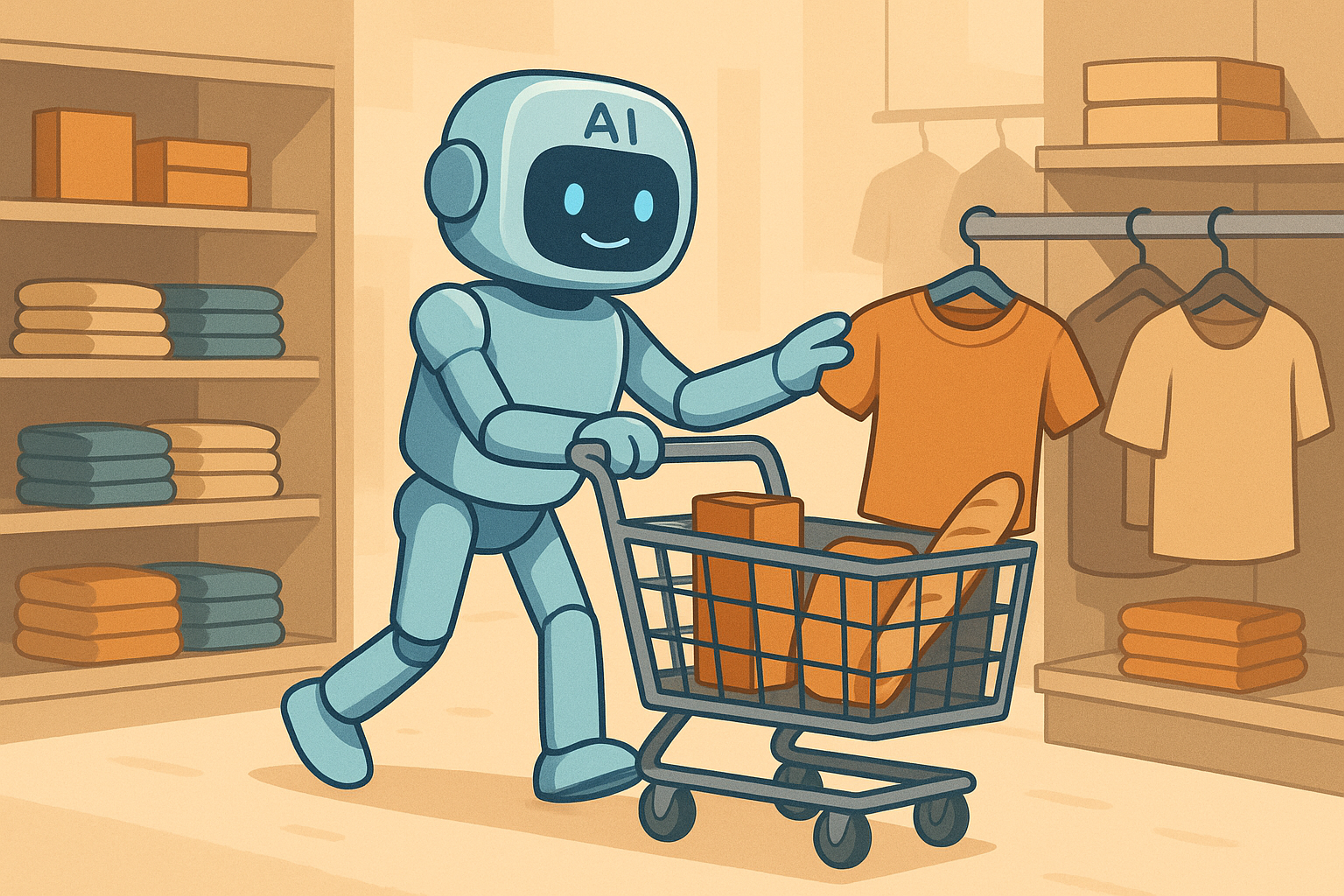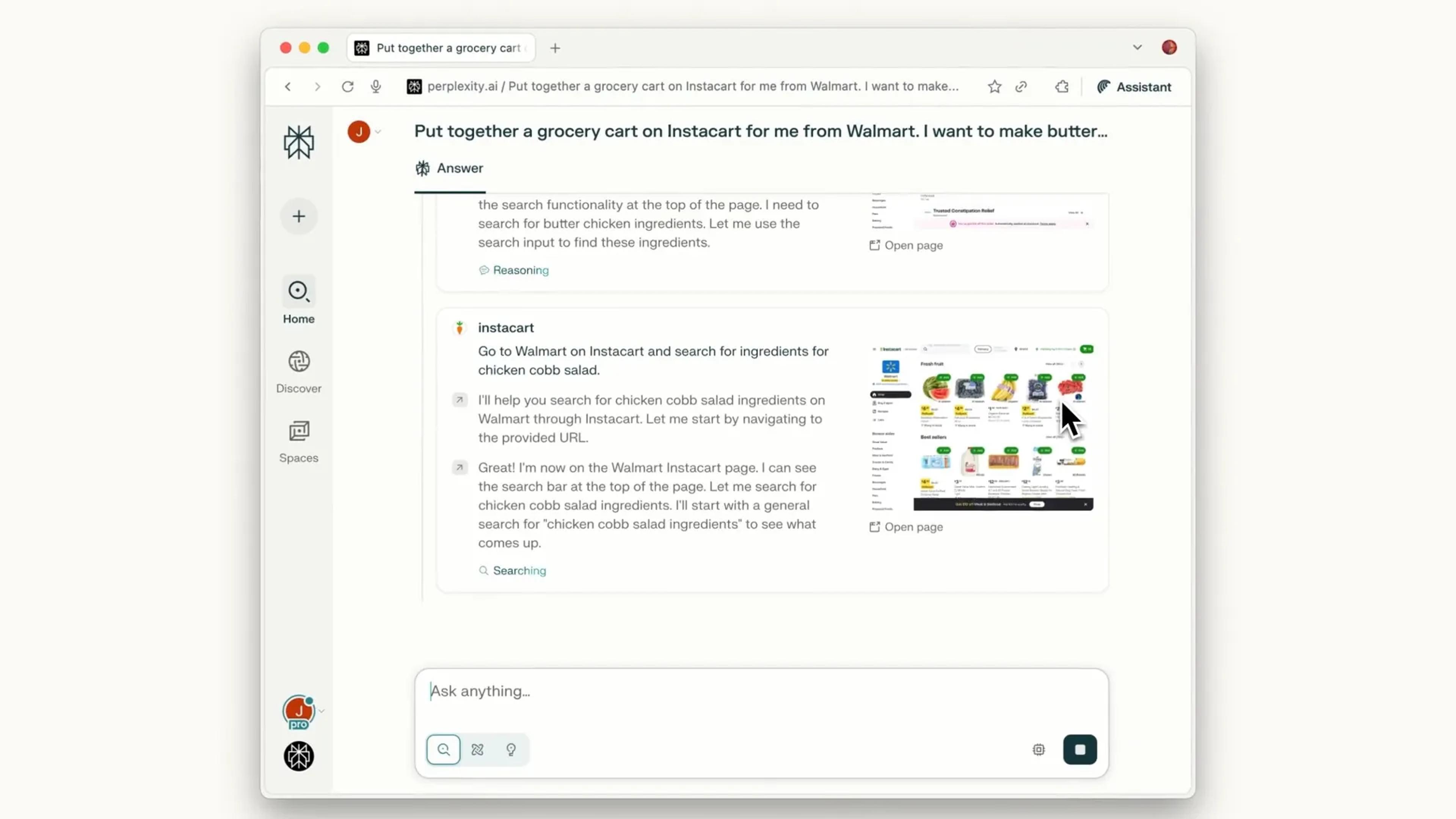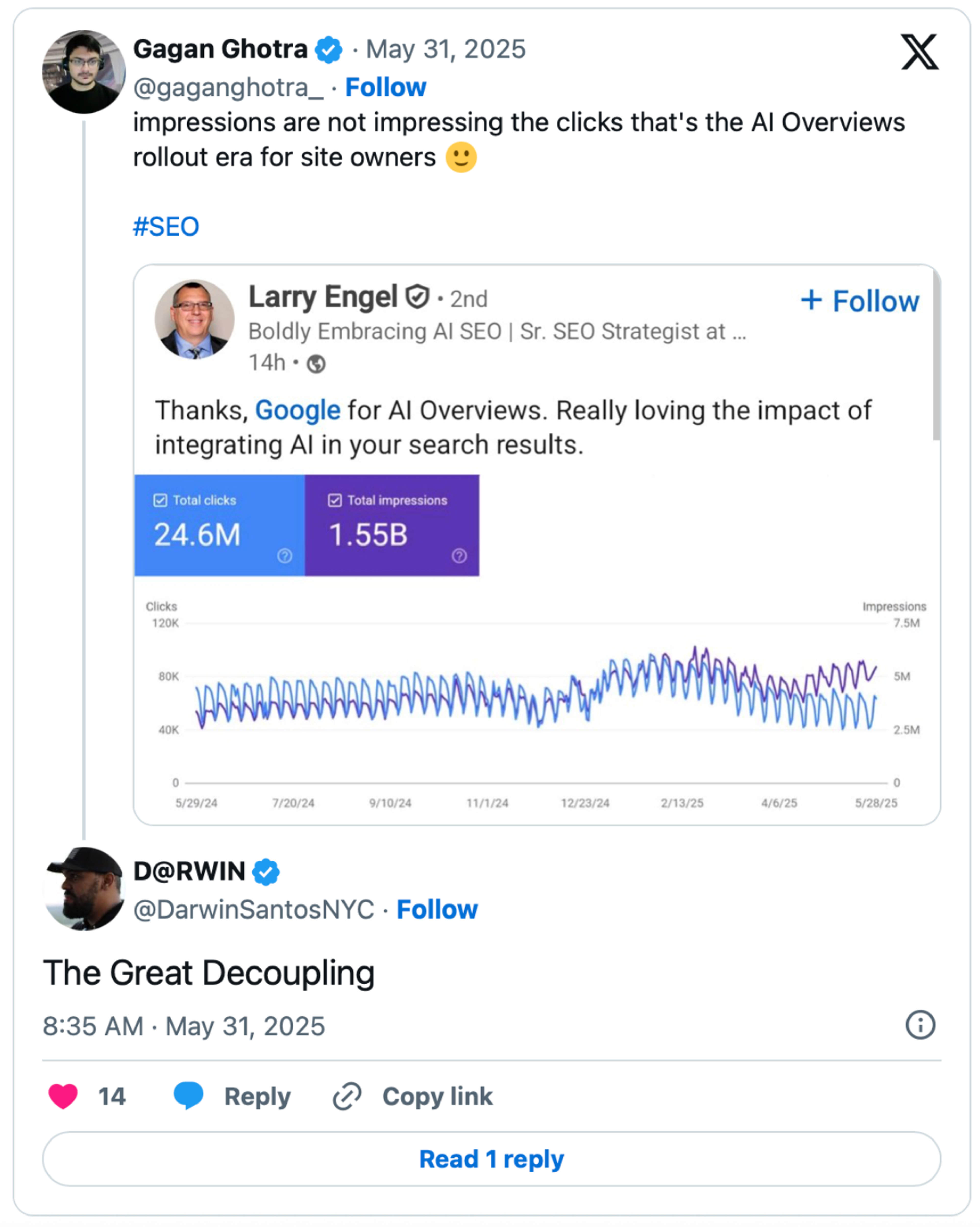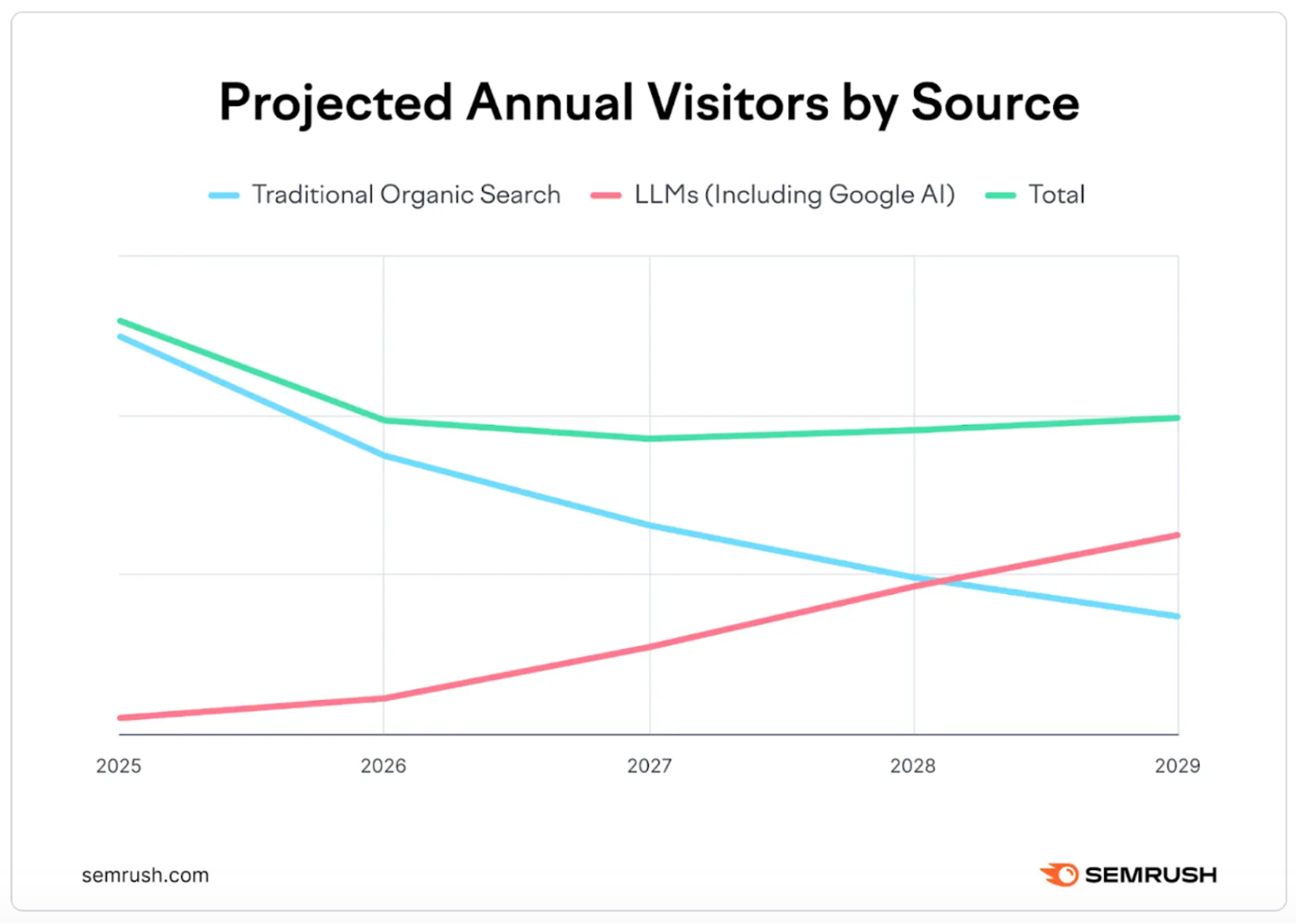An Agentic Shopping Future is Coming
Here is what you can do today

AI-powered shopping agents are reshaping eCommerce, shifting the focus from traditional search to conversational, data-driven product discovery. Here’s what it means for brands, retailers, and the future of online shopping.
Agentic shopping experiences have been heralded as the next transformation in online shopping for months. I'm not a futurist who jumps at every technology trend. It takes more than tech billionaires pouring billions into ventures like the metaverse to convince me the "next big thing" will materialize. Sometimes technology arrives before its time; sometimes that time never comes at all.
But occasionally, a new paradigm emerges that changes everything. LLM technology has been doing exactly that, and the pace is accelerating in 2025. We've evolved from LLMs that debug code and rewrite emails to sophisticated multi-agent systems that automate substantial portions of human work. It's simultaneously exciting, unsettling, and fascinating.
Last week, I witnessed the future firsthand, and it caught me off guard. I watched Perplexity's new Comet browser independently research products, identify options, compile alternatives with pricing and availability, and complete transactions. No human intervention required. This seamless integration of research, comparison, and purchase represents a quantum leap from today's fragmented shopping journey, where users bounce between search engines, review sites, and retailer websites.
These capabilities, coupled with OpenAI's recent announcements of ChatGPT Agent Mode, an upcoming browser, and a checkout solution, signal a seismic shift. LLMs will soon determine marketplace winners and losers. It's a rare opportunity for those who adapt early.
Sellers who optimize their sites, content, and offerings for context-hungry LLMs have a window to displace legacy leaders in organic search rankings. Sure, the race is on to see who will come out ahead in the battle of LLMs, but the battle for mentions, recommendations, and placement in AI summaries, agentic browsers, and chats is just beginning.

What has Changed, By the Numbers
We’ve already seen drastic changes in search behavior in existing websites. Some numbers:
- The presence of an AI Overview in the search results correlated with a 34.5% lower average clickthrough rate (CTR) for the top-ranking page, compared to similar informational keywords without an AI Overview. [https://ahrefs.com/blog/ai-overviews-reduce-clicks/]
- New this week, research from the Pew Research Center shows that, specifically for Google, AI summaries slash click-throughs by 50% and only 1% of users clicked on the provided source links. [https://www.perplexity.ai/page/google-s-ai-search-summaries-s-Pepq3qYSQGaJ45Fdq3TitA]
- The Great Decoupling is driving a new pattern of behavior where sites are still ranking and getting impressions, but AI Overviews steal the eyeballs of the search user and lead

- LLM traffic is increasing at such a rate that it is expected to overtake traditional organic search traffic by 2028. [https://www.semrush.com/blog/ai-search-seo-traffic-study/?utm_campaign=llm-visibility&utm_source=backlinko.com]

These metrics show that change is happening fast, and it’s happening today. Your own analytics likely reflect the same trend. So how do we ensure that as these changes happen that you are among the winners, and as newer technologies emerge such as MCP Servers for agentic shopping, how do you ensure you are ready?
For Today’s Problems, You Don’t Need to Re-Invent the Wheel
Positioning for the AI Commerce Revolution
This transformation is happening faster than most anticipated, but there's still time to adapt and capitalize on the fundamental shift in search relevance. As we develop strategy for this new landscape, I focus on three areas:
- Things we can control today
- Things we can anticipate controlling in the future
- Things we should monitor going forward
Today, let's tackle what's within your immediate control. The encouraging news? You don't need to reinvent the wheel. SEO fundamentals still apply to AI optimization, but with some crucial adjustments.
AI Optimization Roadmap:
- Fix SEO basics
- Double down on ensuring product data is correct, rich, and complete.
- Write for conversations, not keywords
- Treat every Product Detail Page like a landing page.
- Track what matters: AI-Specific Metrics
Fix SEO Basics
Before pursuing AI-specific optimizations, solidify your foundation. AI agents still crawl and index like traditional search engines, which means:
Technical health is non-negotiable. Fix broken links, achieve sub-3-second load times, and maintain current XML sitemaps. Run a technical audit using tools like Screaming Frog or Semrush you can identify critical issues within hours.
Mobile-first isn't optional. AI agents frequently simulate mobile experiences, so poor mobile performance means deprioritization.
Core Web Vitals are baseline requirements. Your LCP, FID, and CLS scores directly influence whether AI agents recommend your products.
Security matters more than ever. HTTPS everywhere. AI evaluations factor security signals into trust scores.
You can't build effective AI optimization on a shaky technical foundation.
Double Down on Product Data
AI agents are voraciously data-hungry, and incomplete product information eliminates you from consideration entirely.
Comprehensive structured data: Implement full Schema.org product markup, including price, availability, reviews, and specifications. Don't settle for minimum requirements. Add every relevant property.
Granular product attributes: Move beyond basic descriptions. Include materials, dimensions, use cases, compatibility, and care instructions. If customers might ask about it, include it.
Real-time inventory feeds: AI agents avoid recommending unavailable items. Update inventory at least hourly.
Complete visual documentation: Provide multiple angles, lifestyle contexts, and scale references. Write descriptive, natural alt text.
Integrated authentic reviews and Q&A: AI agents heavily weight user-generated content. Ensure reviews are properly marked up and easily parseable.
AI agents make decisions in milliseconds. Missing data means missed sales.
Write for Conversations, Not Keywords
AI agents process natural language, not keyword strings. This requires fundamentally rethinking your content approach:
Embrace conversational tone. Transform "Blue running shoes size 10" into "Lightweight blue running shoes perfect for daily training runs."
Proactively answer questions. For a coffee maker, address implicit concerns: "Is this easy to clean?" and "Will this wake up my roommates?"
Provide rich context. Include usage scenarios, product comparisons, and specific problem-solving benefits.
Create semantic connections. When selling tents, naturally mention compatible sleeping bags and camping equipment.
Integrate structured Q&A. Add FAQ sections using speakable schema markup.
Test by reading aloud. If it sounds robotic, rewrite it. AI agents train on human conversation, not marketing copy.
Design Every Product Page as a Landing Page
In AI-driven commerce, any product page might be a customer's first touchpoint. Design accordingly:
Self-contained value propositions: Clearly communicate your brand's advantages without relying on site-wide messaging.
Immediate trust signals: Display security badges, return policies, and shipping information above the fold.
Comparison-ready formats: Use structured tables for specifications that AI agents can easily parse.
Intelligent cross-selling: Suggest complementary products with clear relationship explanations.
Dynamic social proof: Show real-time purchase activity and inventory updates.
Consider each product page your only conversion opportunity with AI-directed visitors.
Track What Matters: AI-Specific Metrics
AI Overview appearances: Monitor product visibility in Google's AI-generated summaries via Search Console.
Conversational query growth: Track longer, natural language searches in your analytics.
Structured data coverage: Aim for 100% schema markup across your catalog.
AI agent traffic: Segment visitors from shopping assistants and AI agents.
Featured snippet capture rate: Measure content selection for knowledge panels.
Set aggressive monthly targets: 10% increase in AI overview appearances, 15% growth in conversational queries, and complete structured data coverage within 90 days.
The Window is Open, But Not Forever
The future I witnessed in that Perplexity Comet demonstration isn't approaching; it's here. While competitors debate AI's e-commerce impact, early adopters are already optimizing for this reality.
The 2026 winners won't be retailers with the largest ad budgets or flashiest websites. They'll be businesses whose products surface naturally in AI conversations, whose data seamlessly feeds agent workflows, and whose content speaks machine learning's language.
These strategies aren't revolutionary. They are evolutionary adaptations to a fundamental shift in product discovery and purchasing behavior.
Your choice is straightforward: Implement these changes over the next six months, or spend the next two years explaining declining traffic to stakeholders.
Start immediately. Choose one product category, implement one schema markup, and write one conversational description. In twelve months, you'll either celebrate beginning today or regret the delay.
AI agents are already shopping. Make sure they're shopping with you.
Let's Work Together
Interested in digital transformation, strategic advisory, or technology leadership? I'd love to connect and discuss how we can work together.
Get In Touch